This post is late in coming but I think it’s important to share the pics.
This could possibly be the last Joy of Bonsai the the Kawa Bonsai Society of Florida puts on. It’s definitely the last one in its historical venue; the Vp, Louise Leister, had been employed by the Volusia County Agricultural Extension office and was able to secure the building for the show, she is now an independent consultant and doesn’t have that prove large anymore. And considering that the Club is technically in the middle of no where, there is a distinct lack of places for next year’s show (the city the building is located in is called Bunnel, look it up on a map. There are roads but not much else. I don’t think there’s even a McDonald’s in the town…..think about that!). Maybe they’ll find an indoor sports arena like Bill Valavanis did for his National Show. One can hope, I think more bonsai shows should be held over AstroTurf®.
Anyway, I think I’ve alarmed you enough, let’s calm ourselves by looking at the trees, shall we? First, the long shot:
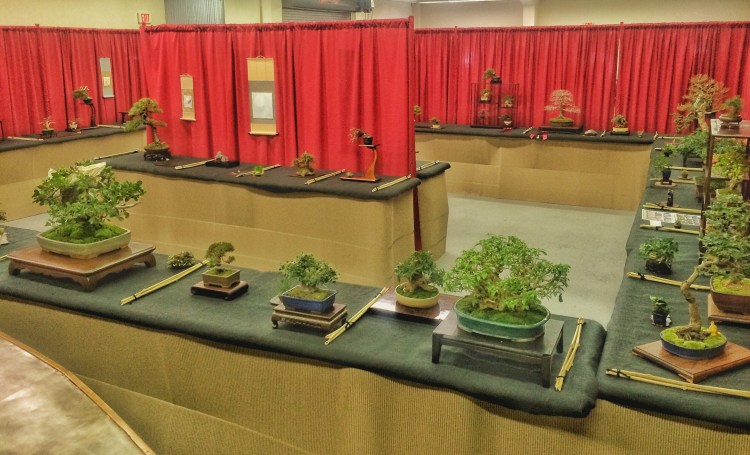 What you see, for those who wish to organize their own exhibitions, are regular 6 or 8 foot tables that are on foot tall, pvc pipe risers. The table tops are a blue-grey burlap and the skirts are corrugated cardboard packing material. All very re-usable. Notice also that each display is separated with a bamboo bundle.
What you see, for those who wish to organize their own exhibitions, are regular 6 or 8 foot tables that are on foot tall, pvc pipe risers. The table tops are a blue-grey burlap and the skirts are corrugated cardboard packing material. All very re-usable. Notice also that each display is separated with a bamboo bundle.
The real investment the club made was the red cloth backdrops. They are specialized backdrops with tubular steel structures and heavy plates on the floor. Very usable but definitely not cheap.
Ok, to the trees, with little commentary. Some of the trees I’ll guess the species. But I’m good at guessing. And, as always with these things, if I make a mistake or left one out, let me know and I’ll fix it.
Starting on top: Japanese black pine (pinus thunbergii)
Conocarpus erectus, buttonwood 
A jaboticaba, myrciaria cauliflora or sometimes plinia cauliflora, from Brazil.
Lagerstroemia dwarf species. Dwarf crepe myrtle. 
I think the next is a foemina juniper 
This one looks like maybe a maple, or it could be a hackberry. 
Sargent’s juniper probably a kifu, or shimpaku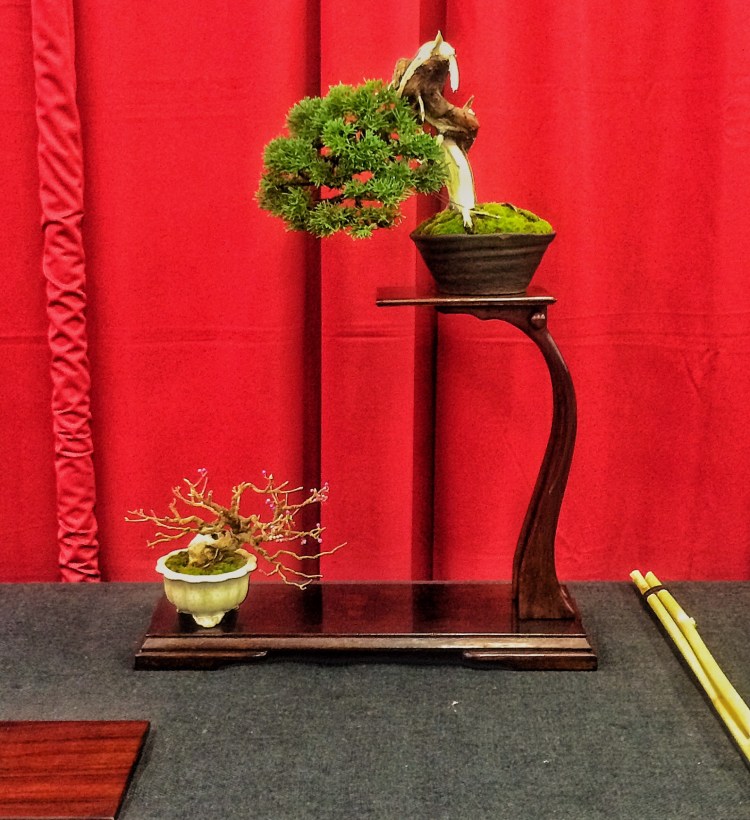
I’m not sure of this one, the bark looks like it could be pomegranate. 
Another Juniperus sargentii, this looks more like shimpaku. 
Here’s a look at the pics before I edited them.
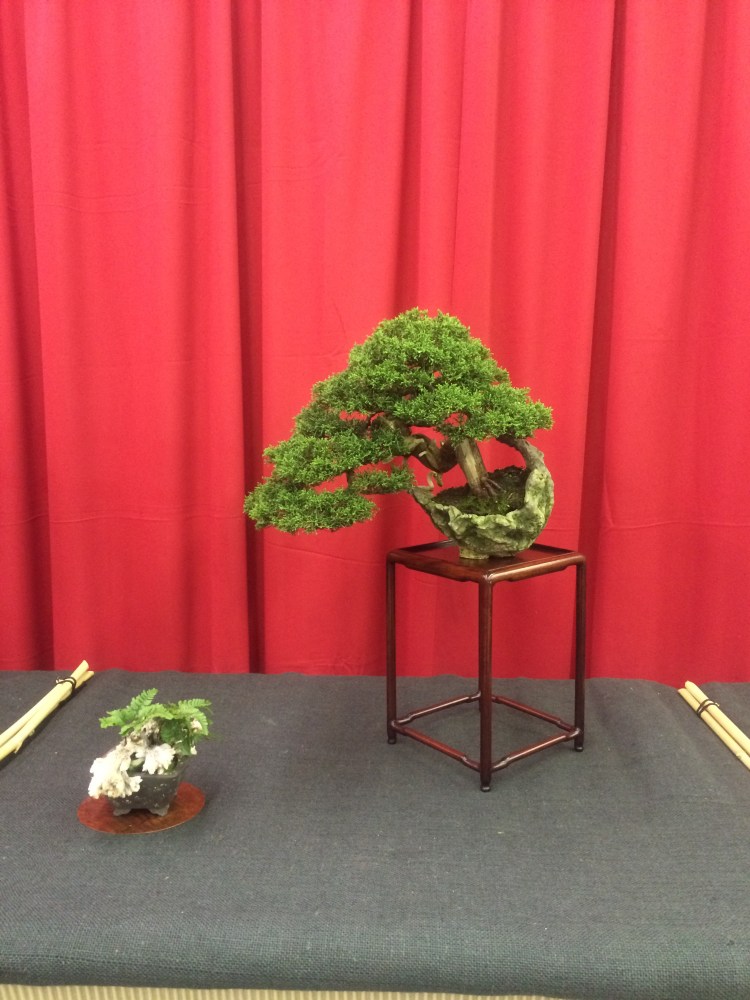 I cropped and levelled them obviously but the real challenge was making the tree look good with the red background.
I cropped and levelled them obviously but the real challenge was making the tree look good with the red background.
The next is a hackberry.
Ficus microcarpa. Looks like retusa to me. 
Buttonwood 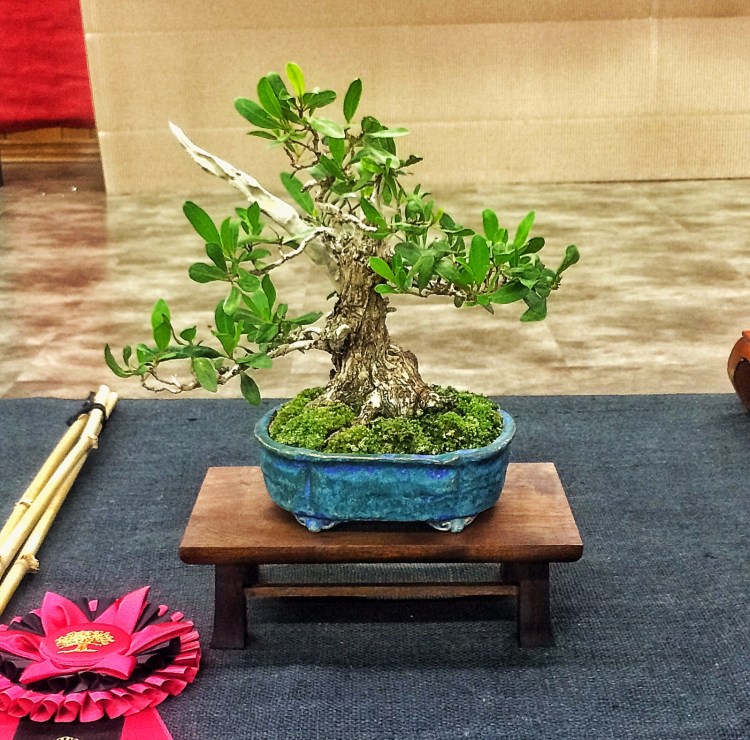
You’ll notice there are ribbons a on various trees. Honestly, I didn’t pay attention to the categories but this might have been best shohin.
Ulmus parvifolia, Chinese elm. 
The weeping branches come from a treatment of a growth inhibitor when the tree was imported.
This looks like it could be a Chinese privet (ligustrum) or a Florida privet (forestiera) 
This looks like shimpaku to me. 
An ilex vomitoria “schillings” 
Ficus salicaria, willowleaf ficus. Incorrectly called, variously, ficus nerifolia, salicifolia, et al. 
This looks like Chinese elm to me. 
From the bark, I’d say jaboticaba 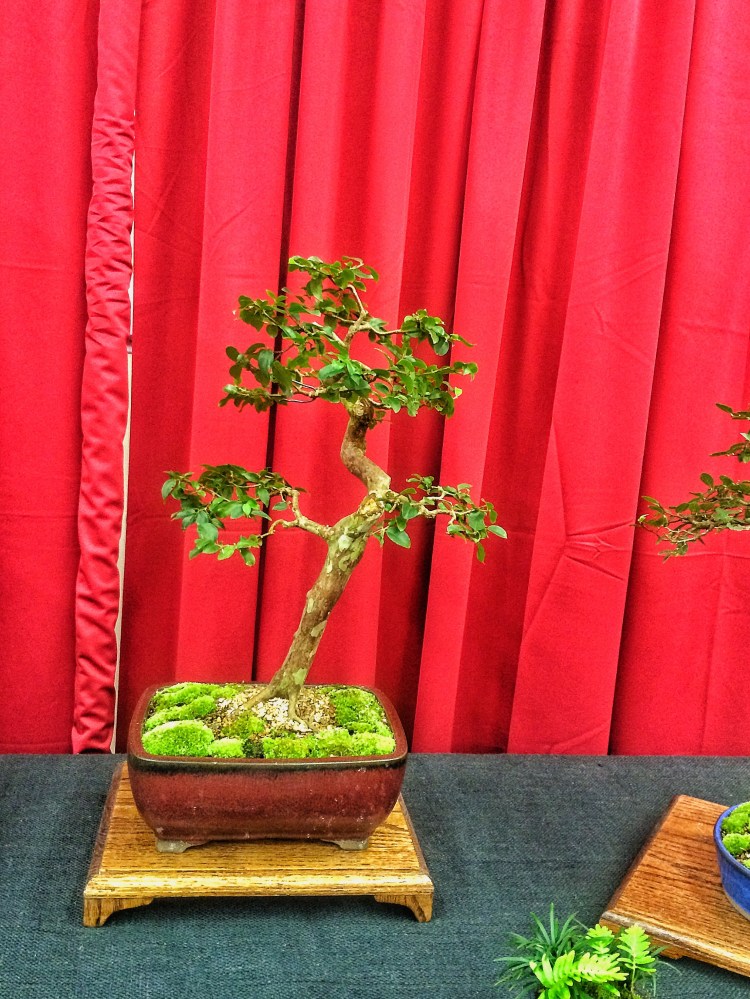
A shohin display with various trees. 
Green island ficus (f. Microcarpa) with a picture timeline. 
A defoliated ficus microcarpa (I think) 
Sargent’s juniper on a root stand carved by Sean Smith, I believe. 
Chinese sweet plum, sageritia theezans
A sea grape, coccoloba uvifera 
A sweet willow leaf ficus clump. 
And lastly, a Japanese black pine. This one is very natural, I like it the best. It looks like an old Florida slash pine. 
And that’s that. Let’s hope Louise finds a venue for next year, this show deserves a good spot.





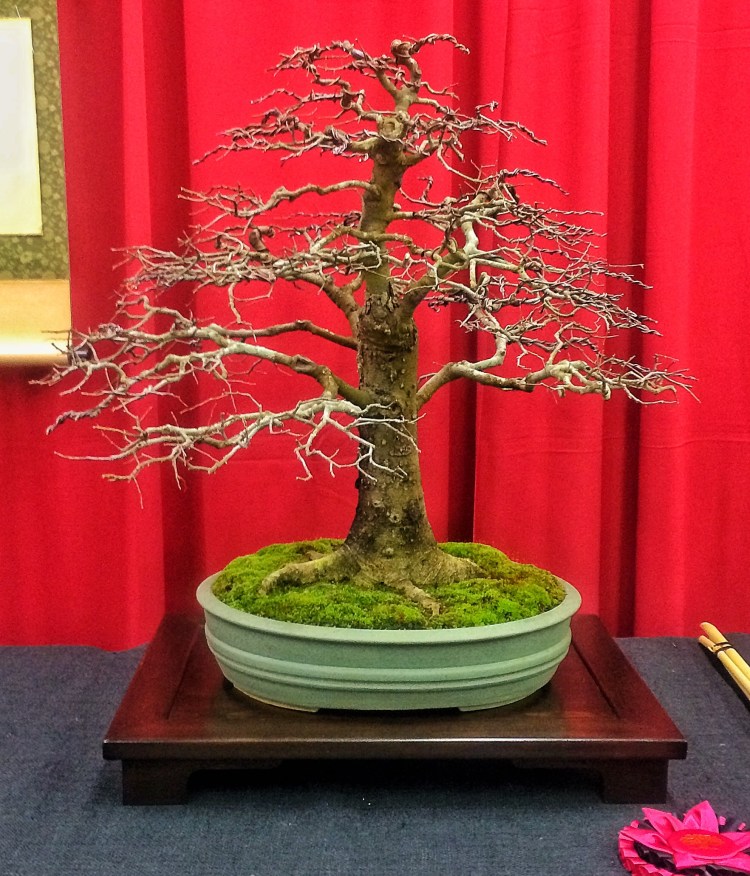









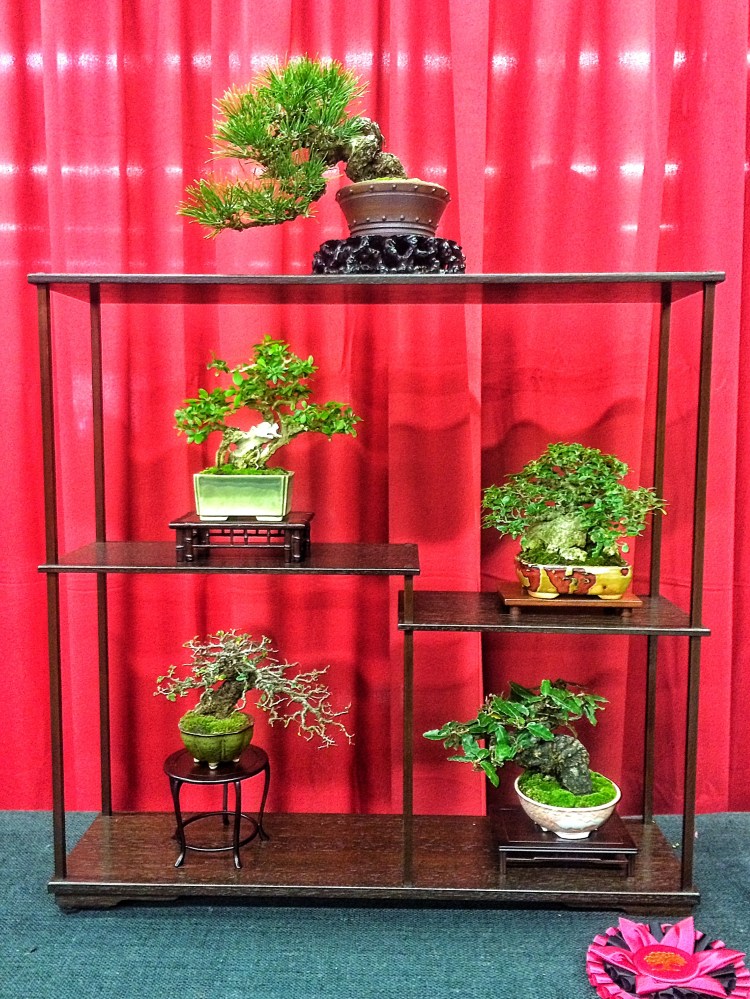





Reblogged this on Wolf's Birding and Bonsai Blog.
LikeLike
Reblogged this on Indiana Bonsai and commented:
Great trees at this show.
LikeLike
These are incredible! Really, really awesome. Do you have any suggestions of books on bonsai trees, which someone who knows little about the topic can read? Thanks!
LikeLike
There is a new book written by an Englishman named Peter Warren simply called “Bonsai” that is up to date with the many techniques we use to create our trees.
LikeLiked by 1 person
Thanks – got it on my list of bits to order.
LikeLike
Is it part of showing your deciduous tree this time of year that requires defoliating whereas the pines and tropicals are kept leafed out?
LikeLike
Most of the deciduous have dropped their leaves by now actually
LikeLike